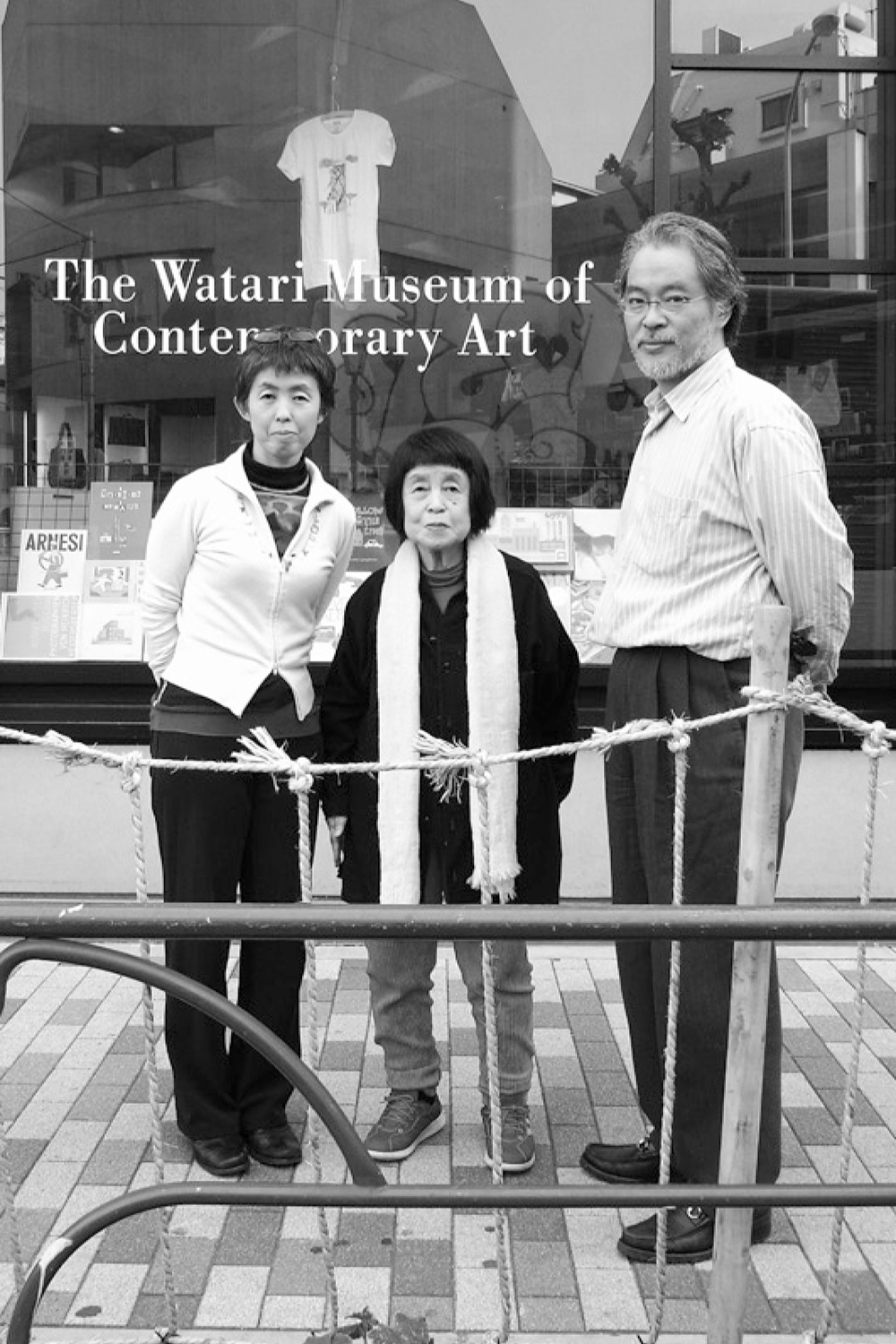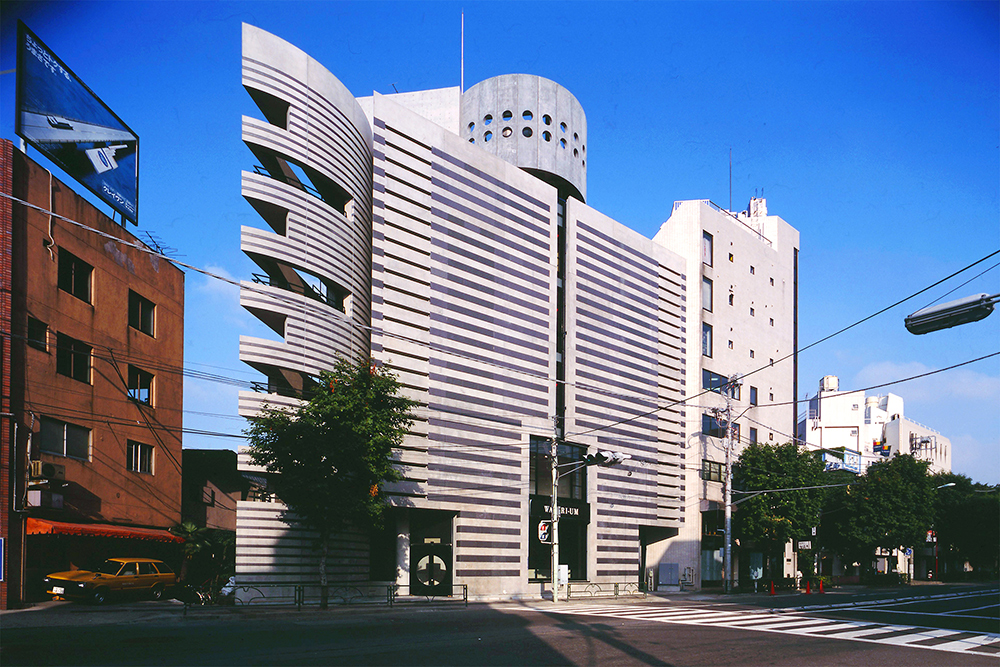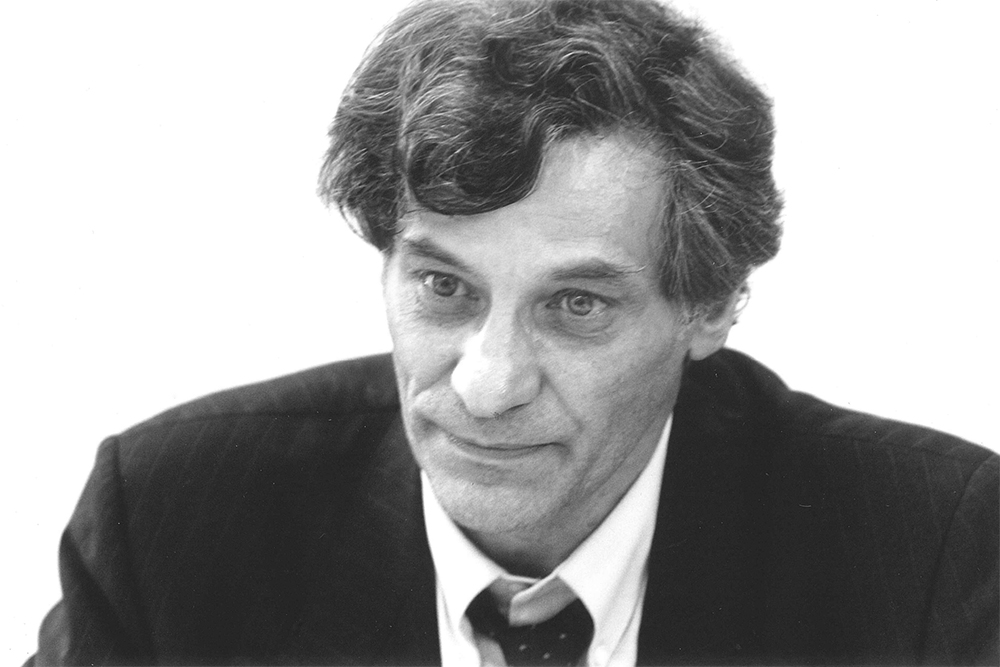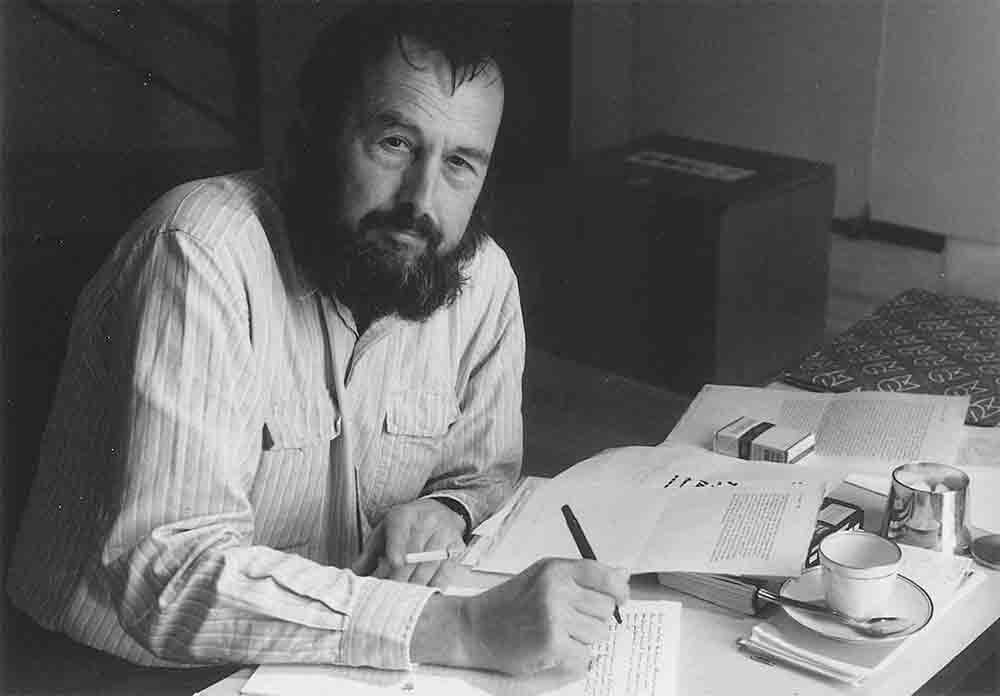ABOUT
-

Etsuko Watari (director), Shizuko Watari (first director) and Koichi Watari (CEO) in front of WATARI-UM, The Watari Museum of Contemporary Art
-

WATARI-UM, The Watari Museum of Contemporary Art
Greetings
WATARI-UM, The Watari Museum of Contemporary Art opened as a private art museum in September 1990.
Our first director Shizuko Watari (1932-2012) organized Gallery Watari there from 1972 to 1988, and was one of the first to introduce the world’s leading contemporary artists to Japan, including Andy Warhol, Keith Haring, Donald Judd, and Sol LeWitt. The WATARI-UM collections are based on the works collected in the 1980s through these activities .
The architecture was designed by Swiss architect Mario Botta, and the granite and concrete striped facade, with its impressive and strong design like a bird spreading its wings over the city, has become a landmark in the area.
To have desirable features as a museum and to be able to exhibit new artworks in the future, world-renowned curator Harald Szeemann advised on the architectural design.
In the terms of exhibitions, WATARI-UM has been hosting international contemporary art exhibitions since its opening, inviting Harald Szeemann and another legendary curator Jan Hoet as guest curators. We have also featured the figures who have supported Japanese culture, such as Kumagusu Minakata and Tenshin Okakura, from a unique perspective. Furthermore, since the 1990s, we have also focused on introducing young Japanese contemporary artists, thereby expanding the fan base of contemporary art.
It is also our uniqueness to hold a variety of events to help visitors fain a deeper understanding of the exhibitions. We have held over 1,000 events since our opening, including lectures, workshops, lecture series, study tours to Japan and abroad.
Dear Watari-Um
The world of art is increasingly becoming art in the world. Within that development I find the Watari-Um Museum to be one of the central places. It is realizing on the highest level and in a very refined way what many people are trying to do everywhere.
From the very beginning the Watari-Um Museum has aimed its gaze at the top of the mountain. This could already be seen in the decision to invite Mario Botta to design the building. It could be seen by the invitation of world specialists in exhibitionmaking and the inclusion of artists that are international references for the development of contemporary art. Never was there a confusion between having local roots and being regionalistic.
Due to these extremely high standards there is now a platform arising for redefining the place of Japan within international art. Choosing for the highest measures does not only mean making the most severe judgments, but also generating the highest challenges.
The choices that are appearing in the list of the artists are clearly Japan-based. The Watari-Um Museum is neither regionalistic, nor inter-nationalistic in the sense that it is showing whatever is considered important everywhere. It is: Japan choosing its links, based on the sensibilities of its own culture.
At the same time it is intensively researching and carefully engaging with Japanese and Asiatic artists, therewith enabling them to be an integral part of the whole proposition of the museum, which is one that is becoming a voice to be listened to everywhere. Once Japan will feel more grateful to the Watari-Um Museum than it can now imagine.
Jan Hoet(1995)
-

Jan Hoet
-

Harald Szeemann
“A Sounding Triangle”
Tokyo is fascinating city, quite unlike our Central European cities with their historic downtown section, rather haphazardly flung out suburbs and sleep silos. In Tokyo, wide avenues accommodating every possible architectural style reflect the city’s modernism, yet just around the corner the medieval world lurks in a maze of tightly crowded together two-story Japanese housing and shops. The pervasive link between the two eras and worlds is a California-like supply of energy emanating from a jumble of masts, spars, cables and ropes.
In 1985, Mario Botta was commissioned to build a small museum in Tokyo, the size of the outstanding private houses built by the architect in his native Tichino. The task’s appeal had partly to do with the contrasts in the city’s layout, and partly with the valuable experience to be gleaned from having to cope with the stringent building law requirements of a city familiar with the devastation wrought by fires and earthquakes. There was as well the attraction to Botta of building this, his first museum building, in the light of the particular circumstances involved in fulfilling the order: the commissionary and necessary confrontation between the architect’s personalized forms and Tokyo’s extremely diversified terms of architectural expression, as well as the magic act of the transfiguration of such a physically small starting point into grandeur.
The commission originated with the Watari family. Generally speaking, art in Japan is handled by major department stores, various city district museums and commercial art galleries with a bent for Western art. Hence, as a rule, activity in the field of arts can rarely be defined in terms of tough trends.
The Galerie Watari offered a major exception to the rule. Since the gallery’s opening in 1972, artists featured have included: Max Bill(1972), Nam June Paik (all most every year since 1978), Donald Judd (1978), Soto(1979), Lucas Samaras(1980), Sol LeWitt(1980). Andy Warhol (since1980), Joseph Beuys (since1981), Buckminster-Fuller(1982), On Kawara (1983), Keith Haring (since 1983), Mario Botta(1985), John Cage(1986), Jonathan Borofsky(1987), Allen Ginsberg(1987), Marcel Broodthaers(1988), Even though incomplete, the list of artists featured by the gallery clearly testifies to what, for Japan, amounts to astoundingly widespread research into all the arts. It is a program favoring the immaterial, with an eye at once for Fluxus and for severity; it represents a no-holds-barred opening to all that is in fact Western in the artistic field.
It can be inferred from the list as well that Shizuko Watari has been more inclined to follow her keen intuition than a particular program when it comes to discovering, those artists with “universal appeal.” Her selection of artists is dictated by the ambition to familiarize her city with the international artistic terms of expression in all media, and to do so on her own initiative.
Such a novel spirit calls for novel apparel. Back in 1985, even before Mario Botta’s reputation was furthered still more by an exhibition at the Museum of Modern Art in New York, the architect was featured at the Galerie Watari in a forum; then his collaboration on the museum project already began. The project involved building on the tract of land where the gallery had originally been sited. The outside of the building was to reflect the inner spirit; the building’ s interior would be required to match the multiplicity of interests housed in what was to be named WATARI-UM, Watari Museum of Contemporary Art. The architect had on his hands a triangular plot, the result of a major throughfare and a turnoff onto the littlest of streets housing another of Watari’s activities, a bookshop for art books.
Above all, as the smallest private museum in a country with the greatest number of museum buildings in the world, WATARI-UM represents a manner of expression to bring the adventure that is Art today to Japan. It is an expression of a perspective sensibility and therefore of a possible transubstantiation of the idea of property in the individual. This aspiration now has its own, and unique, housing— in a country which, until so recently, continued to screen out the very world it has now conquered economically.
Greatly fascinated, Mario Botta worked on this project for five years. The striking result fulfills the challenge of turning the Jingumae Shibuya-ku triangle into a Bermuda triangle of the spirit.
Message from Harald Szeemann(1990)
